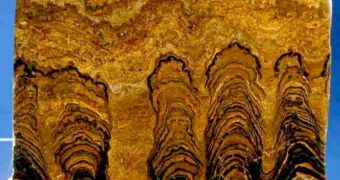According to a new scientific study, it would appear that increases in the amounts of phosphorus contained in marine deposits can be linked to a significant growth in the number of species present in the sea many millions of years ago.
Evolutionary biologists agree that oxygenation events, which took place each time plants started taking over the world, are responsible for most of today's complex and diverse life.
But researchers say that the role phosphorus played in boosting early biodiversity is oftentimes ignored or omitted. They add that the chemical may have had a huge role to play in the development of life as we know it.
[ADAMRK=1]This conclusion belongs to a research carried out by scientists at the NASA Astrobiology Institute (NAI), in collaboration with colleagues from the Exobiology Program.
During the investigations, the group studied in detail how various isotope ratios varied inside marine deposits. Of special interest was the ratio of phosphorus to iron, they say.
They discovered that when phosphorus levels increased, so did the diversity of marine species that occupied the seas some 700 million years ago, during the Proterozoic Era, SpaceRef reports.
One of the most important contributions that the chemical made was helping the planet develop an ozone layer. Before elevated phosphorus concentrations developed on Earth, the planet was undefended from solar radiation.
This means that complex life was not possible here before that time. Complex lifeforms are all based on genetic material (DNA and RNA) and molecules such as proteins, enzymes and amino-acids.
But these components cannot endure under intense solar radiation, as the ultraviolet wavelengths contained within cause mutations, and ultimately destroy the bonds that keep the molecules together.
In a recent paper published in the top journal Nature, the NASA team explains that the rise of phosphorus aided in the development of the ozone layer, which eventually shielded the entire planet from UV radiation.
This allowed the emergence of complex life, and may play a role in explaining the sudden boost in marine biodiversity. Sediment analysis revealed that peak concentrations of the chemical were reached between 750 to 635 million years ago.

 14 DAY TRIAL //
14 DAY TRIAL //